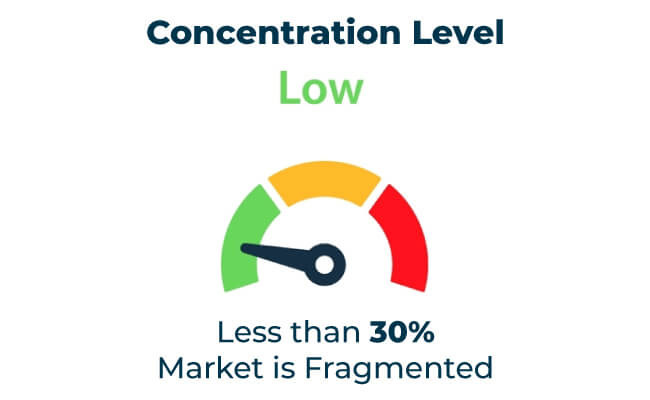The South Korean respiratory inhaler device market is expected to experience significant growth, forecasted to reach USD 2,480.9 million by the end of 2035. With a compound annual growth rate (CAGR) of 6.6% from 2025 to 2035, it is projected to experience rapid growth due to the increasing prevalence of respiratory diseases, particularly asthma and chronic obstructive pulmonary disease (COPD).
| Attribute | Details |
|---|---|
| Projected Industry Size (2035F) | USD 2,480.9 million |
| Value CAGR (2025 to 2035) | 6.6% |
There has been significant development in new product strategies, which is evident across all players in the market for both disease indications. Other initiatives driving growth include government awareness programs related to early diagnosis and treatment modalities, which have significantly reduced undiagnosed cases and led to an increase in prescription rates.
Additionally, the initiatives taken by market players in creating awareness about inhalation therapies also have an impact on the overall market. With a high number of prescriptions, the retail sales channel has been expanding rapidly, as top e-commerce websites are also pushing inhaler device products that are easily accessible to the clients and enable them to select from various manufacturers' options.
| Industry | Growth Trends |
|---|---|
| Pharmaceuticals | Focus on developing smart inhalers and eco-friendly propellants for a sustainable future. |
| Retail | Growth of online platforms offering a wide range of respiratory devices. |
| Healthcare Providers | Adoption of advanced devices for chronic disease management in hospitals and clinics. |

The respiratory inhaler devices market in South Korea is moderately fragmented, with strong competition between international players and domestic manufacturers.
| Vendor Tier | Tier 1 |
|---|---|
| Key Vendors | GSK, AstraZeneca, Boehringer Ingelheim, Sandoz |
| Market Share (%) | 65% |
| Description | Market leaders with a comprehensive range of respiratory care devices |
| Vendor Tier | Tier 2 |
|---|---|
| Key Vendors | Philips Healthcare, Daewoong Pharmaceutical |
| Market Share (%) | 33% |
| Description | Prominent contributors focusing on advanced nebulizer technologies. |
| Vendor Tier | Tier 3 |
|---|---|
| Key Vendors | Local manufacturers |
| Market Share (%) | 2% |
| Description | Providers of generic and affordable inhaler solutions.. |
The South Korean market for respiratory inhaler devices is estimated to grow at a steady growth rate during the forecasted period. The market is majorly driven technological innovation and rising awareness of respiratory health. Smart inhalers with digital connectivity are also playing a significant role in improving treatment outcomes.
More importantly, the environmental-friendly devices would force manufacturers into green technologies, and away from their dependence on propellants in general. In terms of channels, retail would continue to increase, especially with online platforms for convenience and availability to a much wider audience.
South Korea's respiratory inhaler devices market has tremendous growth potential, led by advances in technology, increased prevalence of respiratory diseases, and a shift towards sustainable health care. In this dynamic market, companies can find success focusing on innovation and introducing value for money products. Strong government support and growing awareness among consumers should help the market sustain growth while transforming the future of respiratory care in South Korea.
The market is projected to grow at a CAGR of 6.6% from 2025 to 2035.
The market is expected to reach USD 2,480.9 million.
Combination ICS/LABA inhalers hold highest share of 52.0% and dominated the market.
AstraZeneca, Beximco Pharmaceuticals Ltd., and Boehringer Ingelheim GmBH are few of the prominent players in the market.






Full Research Suite comprises of:
Market outlook & trends analysis
Interviews & case studies
Strategic recommendations
Vendor profiles & capabilities analysis
5-year forecasts
8 regions and 60+ country-level data splits
Market segment data splits
12 months of continuous data updates
DELIVERED AS:
PDF EXCEL ONLINE
South East Asia CMMS Market Size and Share Forecast Outlook 2025 to 2035
Southern Blotting Market Size and Share Forecast Outlook 2025 to 2035
South Africa Casino Tourism Market Size and Share Forecast Outlook 2025 to 2035
South Africa Safari Tourism Market Analysis – Growth, Trends & Forecast 2025-2035
Southeast Asia Submersible Pumps Market Growth – Trends & Forecast 2025 to 2035
South America Tourism Market Growth – Trends & Forecast 2024-2034
South Africa Faith-Based Tourism Market Growth – Forecast 2024 to 2034
South America Residential Water Treatment Equipment Market Trends – Growth & Forecast 2022 to 2032
Southeast Asia Pet Care Market Trends – Demand, Growth & Forecast 2022-2032
South Korea Intellectual Property Market Size and Share Forecast Outlook 2025 to 2035
South Korea Sports Tourism Market Size and Share Forecast Outlook 2025 to 2035
South Korea Tourism Market Trends - Growth, Demand & Analysis 2025 to 2035
South Korea Power Tools Market Report – Trends, Demand & Growth 2025-2035
South Korea Mobile Sterile Units Market Report – Growth, Demand & Forecast 2025-2035
South Korea Hyaluronic Acid Products Market Growth – Trends, Demand & Innovations 2025-2035
South Korea DNA Polymerase Market Growth – Innovations, Trends & Forecast 2025-2035
South Korea 3D Bioprinted Human Tissue Market Trends – Demand & Forecast 2025-2035
Australia and South Pacific islands Tourism Market Size and Share Forecast Outlook 2025 to 2035
Demand for Geosynthetics in South Asia Size and Share Forecast Outlook 2025 to 2035
Taurine Industry Analysis in South Korea - Trends, Market Insights & Applications 2025 to 2035

Thank you!
You will receive an email from our Business Development Manager. Please be sure to check your SPAM/JUNK folder too.
Chat With
MaRIA